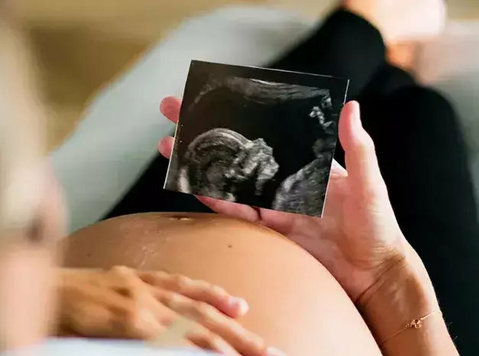Објављено на: Друго у Аргентина | Последње ажурирање: |
What is IVF?
IVF is a groundbreaking medical step that has reshaped reproduction medicine. It gives new hope and solutions to those struggling with infertility. "In vitro" is Latin for "in glass," referring to lab-based fertilization that happens outside the body. The steps of IVF are straightforward: stimulate ovaries to get multiple eggs, collect these eggs, gather sperm, fertilize in a lab dish, and grow the embryo before returning it to the woman's uterus. It's especially helpful for those with blocked fallopian tubes, endometriosis, male infertility causes, age-related infertility, or unexplained fertility issues. IVF jumps over natural conception hurdles. It's a light at the end of the tunnel for fertility challenges and marks a key change in assisted reproductive technologies.
Procedure of IVF:
The process of in vitro fertilization (IVF) involves several key steps, each meticulously designed to maximize the chances of successful fertilization, embryo development, and pregnancy. Here are the typical steps involved in an IVF procedure:
⦁ Ovarian Stimulation: The first step involves stimulating the ovaries to produce multiple eggs using fertility medications such as gonadotropins. It is closely monitored through blood tests and ultrasound scans.
⦁ Egg Retrieval: Once mature, a minor surgery is done under sedation known as egg retrieval in which a thin needle is passed through the vaginal wall to collect eggs from the ovaries.
⦁ Sperm Collection: On the same day as egg retrieval, a semen sample is taken from the male partner or a sperm donor.
⦁ Fertilization: The eggs and sperm are retrieved and mixed in a test tube for fertilization in a laboratory. In some cases, a technique called intracytoplasmic sperm injection (ICSI) is applied, wherein a single sperm is injected directly into an egg to initiate fertilization.
⦁ Embryo Culture: Fertilized eggs (embryos) are cultured in a controlled environment in the laboratory for several days, typically 3 to 5 days, to allow them to develop and grow.
⦁ Embryo Transfer: Once the embryos have reached an optimal stage of development, one or more selected embryos are transferred into the woman's uterus. This is performed through a thin catheter inserted via the cervix.
⦁ Luteal Phase Support: After embryo transfer, medications such as progesterone may be prescribed to support the lining of the uterus and improve the chances of embryo implantation.
⦁ Pregnancy Test: Approximately 10 to 14 days after embryo transfer, a blood test is performed to determine if pregnancy has occurred.
IVF stands for in vitro fertilization. It is a fertility treatment where eggs and sperm are fertilized in a lab, then embryos are implanted in the uterus for pregnancy.
In what cases is IVF recommended?
⦁ Female Infertility Factors: IVF can be beneficial for women with conditions such as blocked fallopian tubes, endometriosis, or ovulation disorders that hinder natural conception.
⦁ Male Infertility Factors: When male infertility issues, such as low sperm count or motility, impact fertility, IVF with techniques like intracytoplasmic sperm injection (ICSI) can facilitate fertilization.
⦁ Unexplained Infertility: In cases where the cause of infertility is unclear despite thorough evaluation, IVF may be considered as a way to bypass potential unidentified barriers to conception.
⦁ Advanced Maternal Age: Women over 35 or those with age-related decline in ovarian function may opt for IVF to increase their chances of conceiving, as egg quality and quantity diminish with age.
⦁ Genetic Screening: IVF allows for preimplantation genetic testing (PGT), where embryos can be screened for genetic abnormalities before transfer, reducing the risk of certain inherited disorders.
⦁ Recurrent Pregnancy Loss: Couples experiencing recurrent miscarriages may opt for IVF with PGT to select embryos less likely to result in miscarriage due to chromosomal abnormalities.
⦁ Fertility Preservation: Individuals undergoing treatments like chemotherapy or radiation that may affect fertility can opt for IVF to preserve eggs or embryos for future use.
⦁ Same-Sex Couples and Single Parents: IVF enables same-sex couples and single individuals to have biological children using donor eggs, sperm, or embryos.
⦁ Tubal Factor Infertility: For women with previous tubal ligation or tubal damage, IVF provides a direct pathway for fertilization without relying on fallopian tube function.
⦁ Endometrial Factors: In cases of thin or hostile endometrium that hinders embryo implantation, IVF protocols can be tailored to improve implantation rates.
What is the success rate of IVF?
In general, the success rate of IVF is dependent upon various factors, among which are the age of the woman, the cause of infertility, and the expertise of the clinic. On average, the success rate ranges from 40% for women under 35 and is lower for older women.
Improving Your Chances for Successful IVF
⦁ Keeping a balanced diet and regular exercise to maintain a healthy lifestyle.
⦁ Following the doctor’s directions and taking the medications at prescribed time.
⦁ Fight stress by practicing relaxation techniques like yoga or meditation regularly.
What are the reasons for IVF failure?
⦁ Poor Egg Quality: The quality of eggs retrieved during IVF plays a crucial role in successful fertilization and embryo development. Poor egg quality, often associated with advanced maternal age or certain medical conditions, can lead to lower chances of successful implantation and pregnancy.
⦁ Sperm Issues: Male factor infertility, such as low sperm count, poor sperm motility, or abnormal sperm morphology, can impact fertilization rates and embryo quality, contributing to IVF failure.
⦁ Embryo Quality: Not all embryos generated during IVF have the same potential for implantation and development. Embryos with chromosomal abnormalities or developmental issues may fail to implant or result in early miscarriage.
⦁ Implantation Failure: Even with high-quality embryos, factors affecting embryo implantation in the uterus, such as thin endometrium, immune system issues, or embryo-endometrial synchronization problems, can lead to IVF failure.
⦁ Endometrial Receptivity: The receptivity of the uterine lining (endometrium) to accept and support embryo implantation is crucial for successful IVF outcomes. Hormonal imbalances, inadequate endometrial thickness, or abnormal endometrial receptivity can hinder implantation.
Conclusion:
IVF shines as a tricky, but productive way to answer the call of the heart for a baby. Learning about it, figuring out when to start, and grasping steps that may boost chances of success can put anyone on a steady path in this IVF adventure. Keep in mind, everyone IVF journey is unique, so holding onto hope and patience are key.
Contact this advertiser







